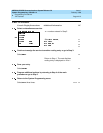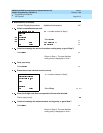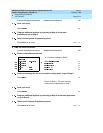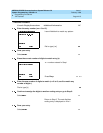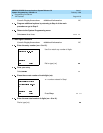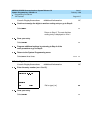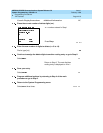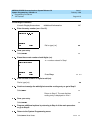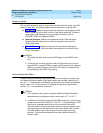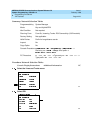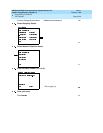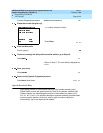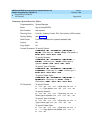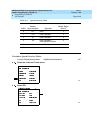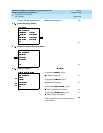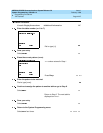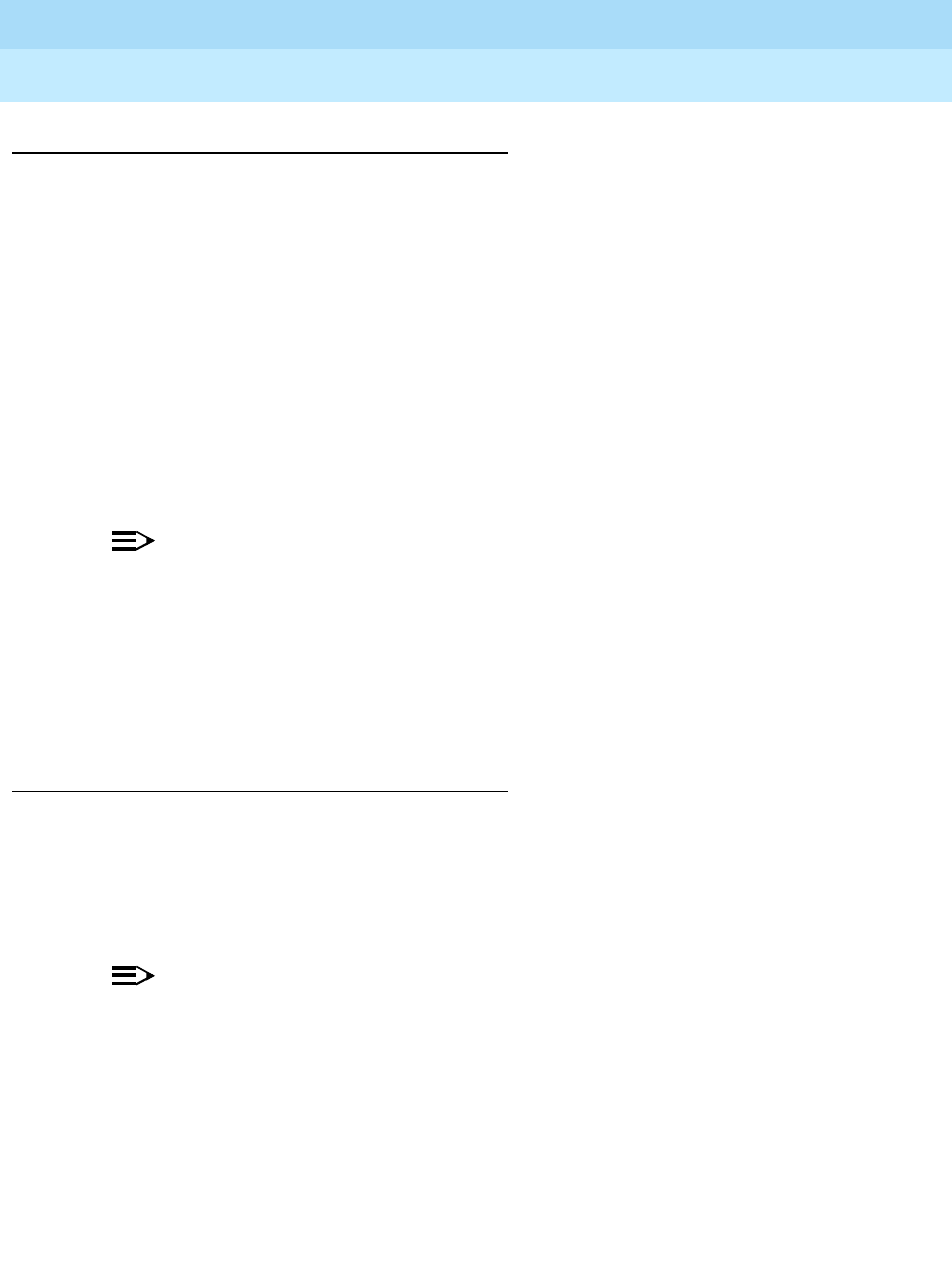
MERLIN LEGEND Communications System Release 6.0
System Programming
555-660-111
Issue 1
February 1998
Programming Procedures
Page 4-220PRI Facilities
4
Outgoing Tables 4
PRI provides tables that work in conjunction with personal lines, pools, and ARS
tables to route calls. The following tables specify services for outgoing calls:
■ Call-by-Call. Selects an outgoing service, based on routing digits and the
bearer capability (voice, data, or both) of the calling extension. It allows a
single group of B-channels to carry a variety of services, such as
ACCUNET, SDN, and Megacom WATS.
■
Network Selection. Selects a long-distance carrier. Calls that match
Network Selection tables can be routed to a specific service by the
Call-by-Call tables.
■ Special Services. Selects services such as international dialing and
operator assistance. Calls that match these tables are
not
routed by the
Call-by-Call tables.
NOTES:
1. PRI tables that work with pools and ARS apply to Hybrid/PBX mode
only.
2. In Release 6.0 and later systems, when the PRI switch type is set for
Legend-PBX or Legend-NTWK to support a PRI tandem trunk, outgoing
tables do not affect outgoing calls for the PRI facility connected to the
slot specified by the Switch Type setting.
Network Selection Tables 4
Dialed prefixes for selecting long-distance carriers are matched to entries in the
four Network Selection tables. Eight default tables are provided, specifying 10***
and 101****. The asterisks are wildcards that represent the various long-distance
carrier codes. (10*** is the current U.S. standard for specifying long-distance
carriers; 101**** is provided for future use.)
NOTES:
1. U.S. customers rarely need to program additional Network Selection
tables because long-distance carrier codes match 10*** or 101****.
2. In Release 6.0 and later systems (Hybrid/PBX mode only), when routing
private network trunks for ARS 10*** and 101**** (Interexchange or IXC)
calls from a networked switch that is not connected to the public
switched network and only has private trunks, the private network trunks
must be assigned to the main pool on the switch where ARS is dialed.
The ARS access code for the local and remote systems must be
identical. The procedure described here does not affect these PRI
tandem trunks.



